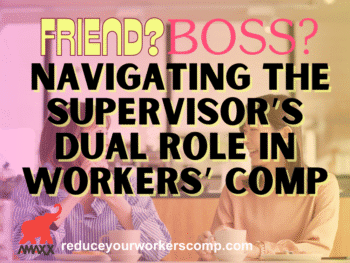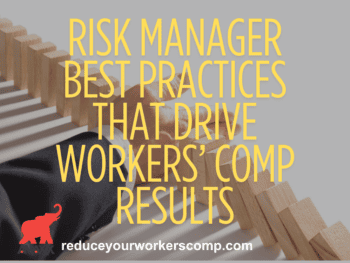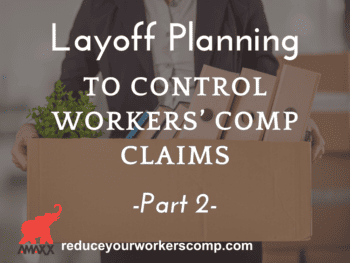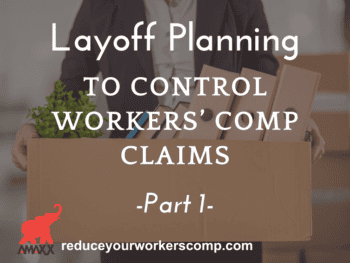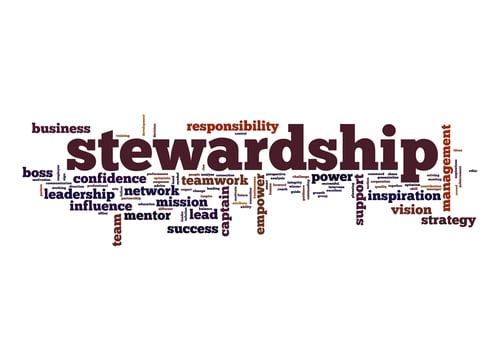
If it’s the company culture, you’re in business! It means your employees are more likely to stay for the long term, less likely to incur injuries, more willing to cooperate and engage in their healing if they are injured, and unlikely to stay out of work for very long. A strong, positive corporate culture is key to keeping workers happy — especially if and when they are injured.
Savvy organizations understand that and know the 5 strategies that must be carefully implemented to create a winning corporate culture.
See additional articles in 3 part culture series:
- The 5 Building Blocks Of a Positive Corporate Culture: Part I
- The 5 Building Blocks Of a Positive Corporate Culture: Part II
- The 5 Building Blocks Of a Positive Corporate Culture: Part III
-
Autonomy/Safe Culture
Micromanaging people and forcing them to adhere to strict sets of rules and regulations do not produce creative, out-of-the-box thinking that puts companies ahead of the competition. What is needed is effective collaboration among workers. Synergy is the key.
Groups of workers can achieve amazing results when they feel safe to share their ideas and are focused more on working together rather than one-upping other workers. This has been proven in the popular, Marshmallow Design Challenge.
Click Link to Access Free PDF Download
Design engineer Peter Skillman came up with the idea of looking at group interaction through an exercise replicated at many companies. It begins with four components:
- 20 sticks of uncooked spaghetti
- One yard of tape
- One yard of string
- One marshmallow
Teams of 4 each are given 18 minutes to create the tallest possible free-standing structure using only those ingredients. Skillman and others have undertaken the study with many groups; such as CEOs, lawyers, recent business school graduates, and kindergarteners. The winners are always, hands down, the kindergarteners. Their structures are on average 26 inches tall. Among the worst performers are recent MBAs, with a dismal average structure of just 10 inches.
5-Year Old are Better at Collaboration Than Business Students & CEOs
Why are 5-year-olds better at collaboration than other, older more experienced groups? As Skillman himself has said; “none of the kids spend any time trying to be CEO of Spaghetti, Inc.”
It is not that the kindergarteners have better skills than those in the other groups, it is that they interact more effectively. The business school students are engaged in managing their statuses within the group, figuring out where each fits into the picture. Instead of focusing on the task, they are spending their energy on the pecking order of the group. By contrast, the kindergarteners work together enthusiastically, trying new ideas, moving quickly, and helping one another toward the solution.
FREE DOWNLOAD: “5 Critical Metrics To Measure Workers’ Comp Success”
Navy SEALs work together in much the same way. Each is dependent on the success of the other. If one fails, they all fail — or even die.
Creating an atmosphere where workers feel free to truly share their input without fear of repercussions requires breaking down silos and encouraging each and every person in the organization to speak up. Employees who feel valued by a company are more apt to feel comfortable contributing to the greater good. Skillman suggests the following to help workers feel autonomous and safe:
- Allow them to learn by doing and discovering problems that can’t be predicted in advance.
- Simultaneous iteration enables a free flow of good ideas.
- Multiple iterations usually beat a commitment to making the very first idea work; i.e., practice makes perfect
- Encourage wild ideas.
Organizations can encourage autonomy by giving employees time on which to work on something not necessarily related to their normal jobs, but something they are interested in doing. This helps set expectations and can also lead to the creation of light duty work for workers who become injured.
Conclusion
Employees who are not only allowed but encouraged to work outside the rules and be creative are much more likely to feel a stronger sense of connection appreciation and connectedness to their organizations. In addition to autonomy; mastery, belonging, vulnerability and purpose are the building blocks to create a winning corporate culture in which workers take pride, leading to fewer injuries and faster returns-to-work. Parts II & III take a look at those strategies.

Author Michael Stack, CEO Amaxx LLC. He is an expert in workers’ compensation cost containment systems and helps employers reduce their workers’ comp costs by 20% to 50%. He works as a consultant to large and mid-market clients, is a co-author of Your Ultimate Guide To Mastering Workers Comp Costs, a comprehensive step-by-step manual of cost containment strategies based on hands-on field experience, and is founder & lead trainer of Amaxx Workers’ Comp Training Center .
Contact: mstack@reduceyourworkerscomp.com.
Workers’ Comp Roundup Blog: https://blog.reduceyourworkerscomp.com/
©2019 Amaxx LLC. All rights reserved under International Copyright Law.
Do not use this information without independent verification. All state laws vary. You should consult with your insurance broker, attorney, or qualified professional.
FREE DOWNLOAD: “5 Critical Metrics To Measure Workers’ Comp Success”


